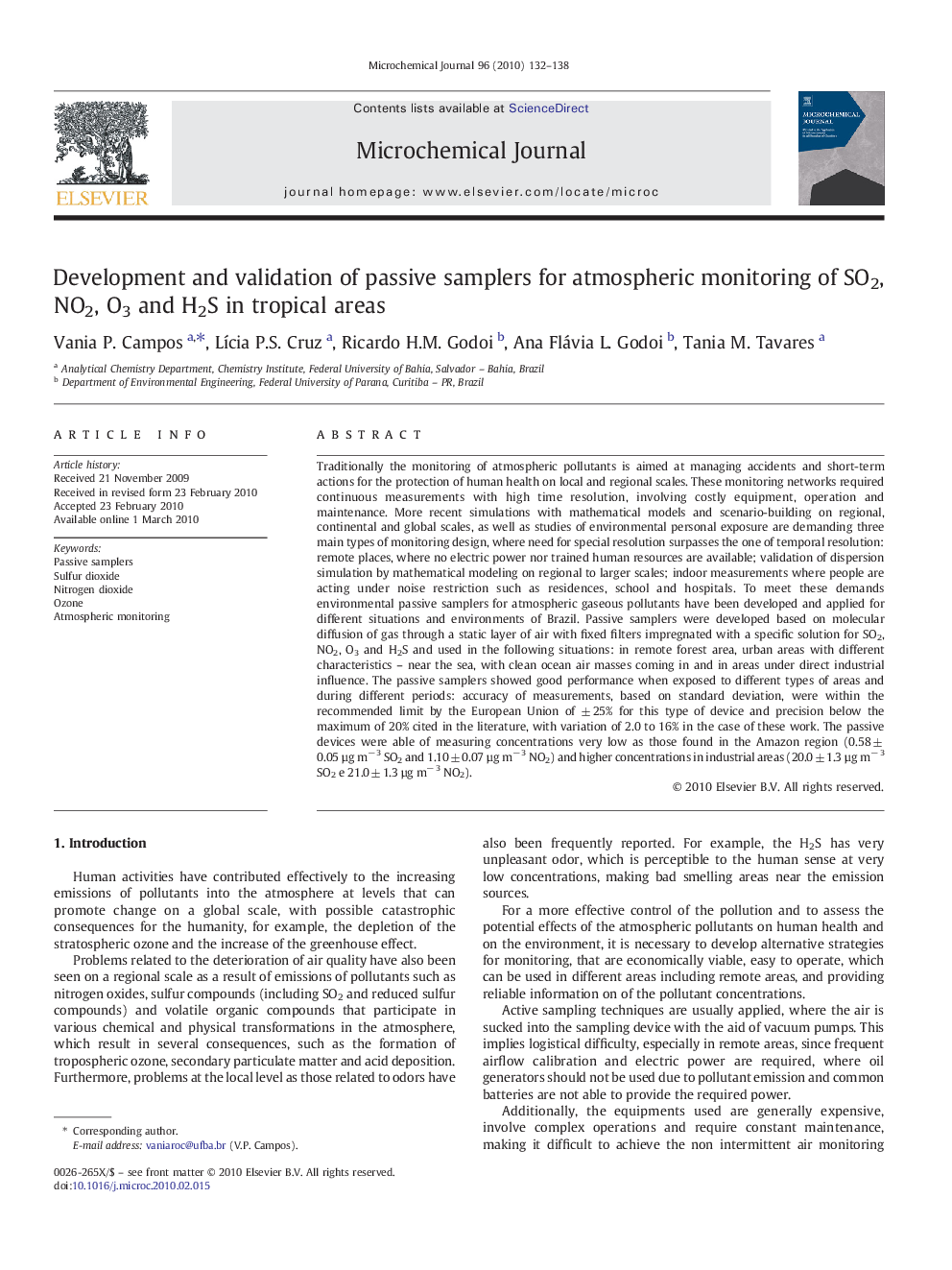| Article ID | Journal | Published Year | Pages | File Type |
|---|---|---|---|---|
| 1227838 | Microchemical Journal | 2010 | 7 Pages |
Traditionally the monitoring of atmospheric pollutants is aimed at managing accidents and short-term actions for the protection of human health on local and regional scales. These monitoring networks required continuous measurements with high time resolution, involving costly equipment, operation and maintenance. More recent simulations with mathematical models and scenario-building on regional, continental and global scales, as well as studies of environmental personal exposure are demanding three main types of monitoring design, where need for special resolution surpasses the one of temporal resolution: remote places, where no electric power nor trained human resources are available; validation of dispersion simulation by mathematical modeling on regional to larger scales; indoor measurements where people are acting under noise restriction such as residences, school and hospitals. To meet these demands environmental passive samplers for atmospheric gaseous pollutants have been developed and applied for different situations and environments of Brazil. Passive samplers were developed based on molecular diffusion of gas through a static layer of air with fixed filters impregnated with a specific solution for SO2, NO2, O3 and H2S and used in the following situations: in remote forest area, urban areas with different characteristics – near the sea, with clean ocean air masses coming in and in areas under direct industrial influence. The passive samplers showed good performance when exposed to different types of areas and during different periods: accuracy of measurements, based on standard deviation, were within the recommended limit by the European Union of ± 25% for this type of device and precision below the maximum of 20% cited in the literature, with variation of 2.0 to 16% in the case of these work. The passive devices were able of measuring concentrations very low as those found in the Amazon region (0.58 ± 0.05 µg m− 3 SO2 and 1.10 ± 0.07 µg m− 3 NO2) and higher concentrations in industrial areas (20.0 ± 1.3 µg m− 3 SO2 e 21.0 ± 1.3 µg m− 3 NO2).
